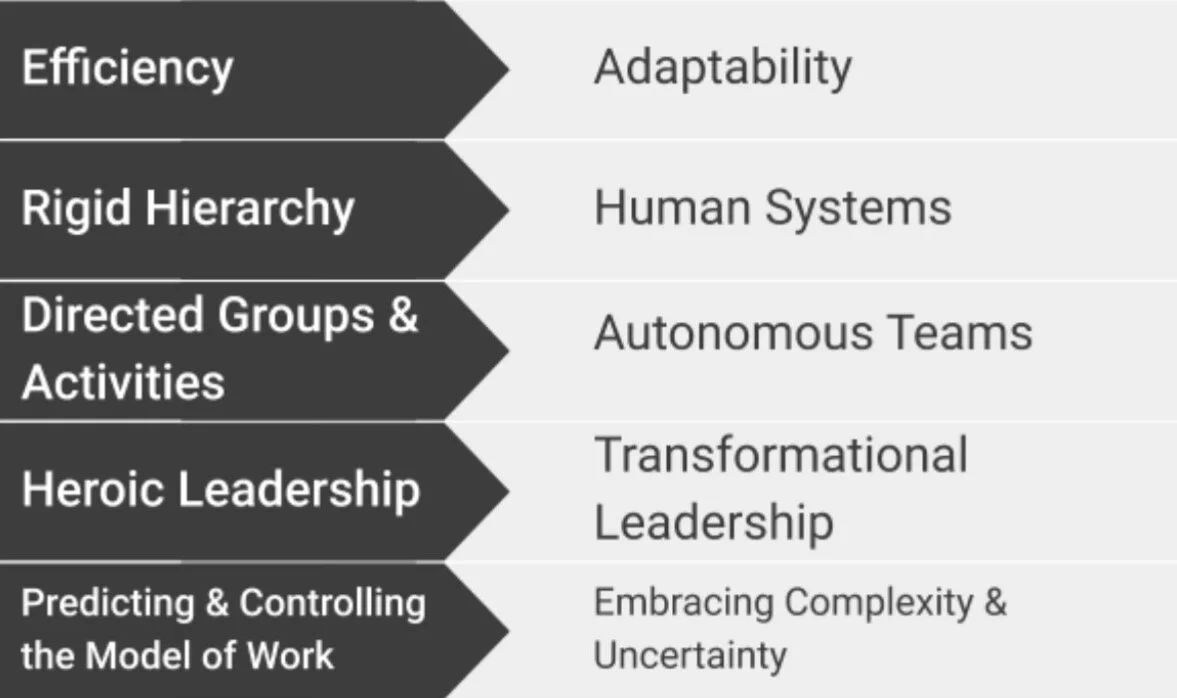Why planning for antifragility will help thrive from the chaos of Covid19.
Success consists of going from failure to failure without loss of enthusiasm - Winston Churchill.
When I meet someone new and they ask what I do I have a standard response. "I have three projects you may have used or heard of and 12 you never heard of.” I tell people I've shut down more businesses that most people start and have failed more than I have succeeded because my largest failures have proved to have provided my greatest insights. They also changed my mindset to stress and how I respond to change. In part one of this series we introduced the idea that resilience is a reaction to survival and this is different from Antifragility which is the ability to thrive and rapidly adapt to change in chaos. The reason this distinction is important is you can choose to face the reality of business failure & market collapse or introduce a new way of working to thrive from COVID19 and make exponential gains.
For most people the ability to adapt is inherently fragile; our cognitive bias is designed to keep us safe. The first step is that we need to recognise we're operating in a different context than normal. The Cynefin framework from Dave Snowden is a decision-making tool that helps us perceive situations and make sense of our own and other people's behaviour. When we don't know which state we are in and can’t agree on a way forward , it's called disorder. How many of your people have felt overwhelmed lately? This is because we are used to operating in a complex environment where the relationships between cause and effect are obvious in retrospect. We usually get to conduct experiments that are safe to fail to learn.
Due to Covid19, we are currently operating in a state of chaos. Chaos is when there is no relationship between the cause and effect at a systems level. In this state, you've got to be quick and decisive — make little steps you know will succeed, so you can begin to tell a story that makes sense. A antifragile system is one that responds positively to change.
By adopting an antifragility mindset, you can move from a state of chaos to a state of complexity and continue to do so regularly, adjusting your tactics at each of the six phases ofCOVID19 while you position your organisation for a PostCovid19 world.
The reality is most organisations in New Zealand are not accustomed to the pace of change required to respond to COVID19. How can you tell, the fragility of a business or system can be measured; anything that has more downside than upsides from random shocks is antifragile; the reverse is fragile.
We want an antifragile system because we expect constant change during COVID19; an antifragile system feeds from stress. It drives the business based on change and even facilitates the change from within.
Constraints are the key to innovation, and COVID19 is introducing these without choice. By introducing a new antifragility into your organisations, you can speed up the velocity of the current projects, increase acceptance of failure and enable your team to respond to change rapidly.
So how do you introduce anti-fragility? In part one of the series we outlined that our modern organisations are facing stress starvation - this means that the more starved of volatility a system is, the less likely it is to be prepared for an extreme event like COVID-19.
By introducing stress and controlled uncertainty in business systems, we can expose teams to risk in a safe way. Because we're not often not aware of the shortcuts our brain has created, we need to learn how to recognise the cognitive bias and move past it; this can be uncomfortable. Using stress inoculation, we can retrain the cognitive bias to appreciate randomness and create new neural pathways. Applying regular and controlled stress to a system will lead to antifragility. The key is to provide positive reinforcement & quick feedback loops. This trains the team to leverage non‐linearities through experiential learning. This speeds up the acquisition of knowledge through doing.
The question is, how do you do this in near real time when your organisation has never operated in this manner previously. What resources does your organisation already have in this domain of knowledge and where do you need to supplement antifragility mindsets in business units which are failing to adapt at speed.
One of the main barriers to turning knowledge into action is the tendency to treat talking about something as equivalent to actually doing something about it - Jeffrey Pfeffer.
In order to implement new tactics you must be able to articulate an approach to organise resources. While COVID-19 is the perfect environment for companies to introduce an antifragility mindset; the issue is that there is a knowing-doing gap, i.e. a gap between what companies know they should do, and what they can do.
Most workplace learning goes on unbudgeted, unplanned, and uncaptured by the organisation. Planning can facilitate developing knowledge and generating action but we don’t have the luxury of time when we consider COVID-19 is an unprecedented opportunity.
How can you overcome this disconnect between knowledge and action in the short term? Start looking at your internal team for antifragility; leaders can only show up in groups, and those that are naturally moving through your organisation to provide certainty and change your team’s mindsets should be enabled. In an antifragile organisation, people showing leaderness qualities have naturally already risen to the front; they aren't waiting for the permission of the CEO or the Government to take action.
Put in place support structures to facilitate change by removing the traditional decision support systems that act as barriers to enable decentralised decision making and accountability. Link business decisions to the company values first and trust your team to understand their P&L or provide support to increase their financial literacy.
To be really effective you need talent who can operate at a level where they embody antifragility characteristics and are comfortable operating at an organisational design level. This is because when you expose an environment to stressors you need someone to work with the team to determine the pathways forward. It's always slightly uncomfortable to experience growth. It's like building up strength in a muscle, breaking down the fibres and the muscle tissue grows. To do this effectively you need a strength and conditioning coach to make sure you do the correct exercises so you don't injure yourself and to hold you accountable for taking the necessary actions to reach the results.
The sooner you realise that your old business model is not going to work in a POSTCovid world the faster you’ll be open to disrupting your own organisation. Most corporations are still caught in a state of 'acting' like they know everything, and treating this situation like a complex problem. Covid-19 is a chaotic problem.
Bringing new talent into your environment will immediately bridge the knowledge gap, this will ignite your organisation. Find people or partners with a passion for creating change, with a sense of purpose, who operate with decentralised decision making and act with accountability; they will provide a cognitive augmentation to your existing team to help evolve your culture.
Introducing AntiFragility will be financially beneficial. This is a change in mindset that impacts people, culture, processes and intellectual property. As the organisation begins to adapt, self-organization increases, this reduces the impact on the time delay for innovation. The business units in your organisation that can adopt new mindsets will become a catalyst for social change.
The environment has done the heavy lifting. The trends are still apparent; the acceleration of office to remote work, from physical stores to digital stores, from global to local artisans, from living central to living rural and from greed to collaboration.
Antifragile systems can withstand and benefit from this kind of outlier event and will make exponential gains. Resilient companies gains are measured and capped. Creating an antifragile culture is difficult because it's a socio-technical system and our cognitive biases are designed to keep us safe. Chaos is not safe. You can't plan to navigate the chaos, so embrace it and find new conceptual frameworks to aid decision-making to fail fast and act with agility to organise work and action. There are no frameworks to deal with randomness, that's trying to control the uncontrollable. Becoming antifragile requires deliberate practice and coaching.
There will be six distinct phases to COVID19. As we move into each stage, your team will experience uncertainty and change. Become situationally aware, recognise you are dealing with chaos and act accordingly to thrive and help create a new narrative where well being, circular economy, transparency and regenerative business practices are the new normal. Don't plan for resilience if you want your organisation to thrive in a POSTCovid world; introduce an antifragility mindset to thrive from Chaos.

